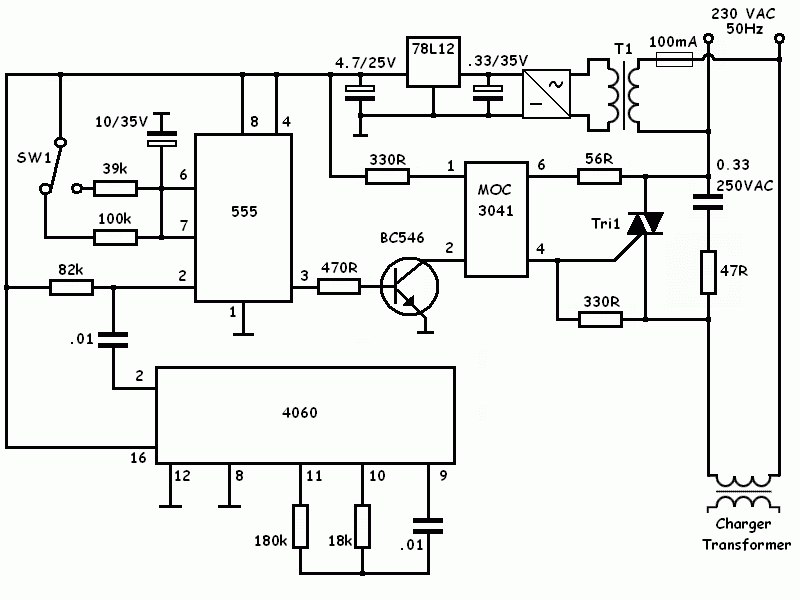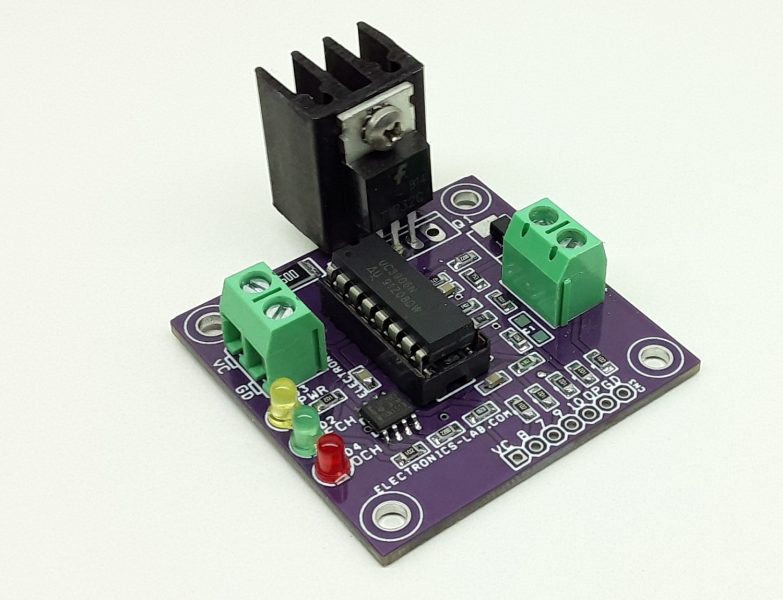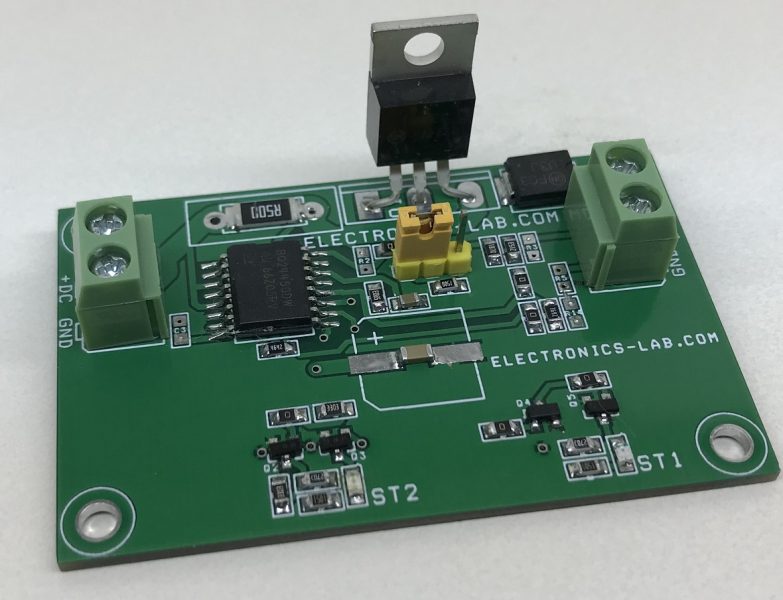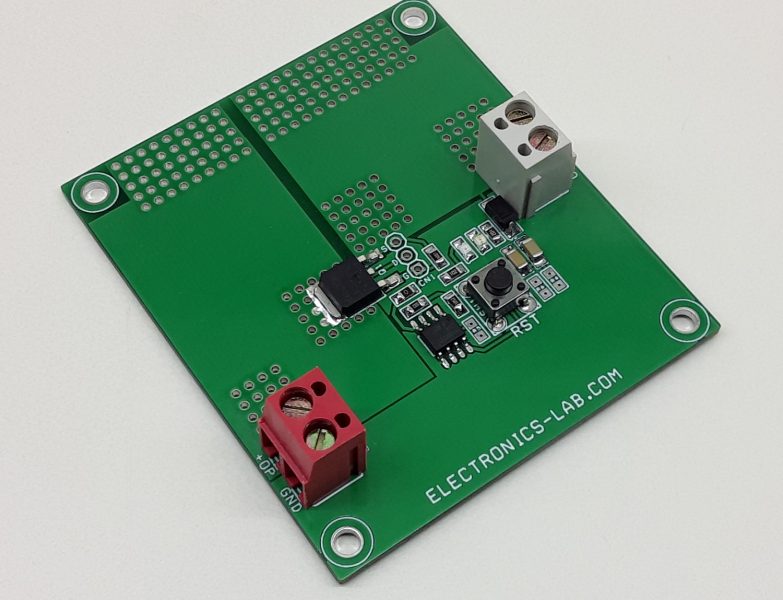Pulse Charger for reviving tired Lead Acid batteries
- Ante
- ante135@hotmail.com
- 50.374 Views
- medium
- Non tested
Description
If you own a motorcycle, a motor home, a caravan, a lawn mover, a day cruiser or maybe a vintage car you must at some point had to write off a lead acid battery. When a battery is improperly charged or allowed to self-discharge as occurs during non-use, sulphate crystals build up on the battery’s plates.
The sulphate preventing the battery from being fully charged and therefore it is unable to deliver its full capacity. When trying to charge a battery in this state it only gets hot and looses water, the gravity of the electrolyte is not increasing to its normal full charge state. The only thing you do is killing the battery completely. If a battery has a resting voltage of at least 1.8 Volts/cell and no cells are shorted, desulphation of its plates can be done. This circuit is an add-on and part for a modification of a normal charger and it takes care of the sulphate problem.
CAUTION: Before you begin a project like this remember: mains voltage is dangerous so if you are not 100% sure of what youre doing consult a friend who has the skills or, dont do it at all !
The project: get hold of an old charger, big or small its your choice depending on the size of batteries you normally handle (bigger is better). There are some tricks to boost the performance if you need it. Start by ripping out everything except the transformer and the rectifier. Some older chargers are equipped with fin rectifiers, which have high voltage drop and must be replaced. Replace with a rugged bridge rectifier that can cope with the amperes. All wiring on secondary should be short and heavy wire. The rectifier should be bolted to the chassis to keep cool. If the charger have a high/low switch its a bonus, if not you can in some cases add a few turns of wire on the secondary winding. The circuit; a 14-stage ripple counter and oscillator IC 4060 produce a pulse, which is the heartbeat of the circuit. The pulse is feed to the 555 timer that deicide the length of the active output. With the switch you can select long or short pulse output. The output of the 555 timer triggers the zero-cross optoisolator triac driver MOC 3041 via a transistor. This gives the charger transformer a soft start via the triac and the snubber circuit. A small power supply is necessary for the circuit and consists of T1 a transformer 15V 0.1A secondary, a bridge rectifier, a regulator and two caps. Because this project include a charger that is (X) the outcome can differ in performance from one case to another. However this do not mean that your project doesnt work, but the efficiency can vary. Some notes the snubbercap is a high voltage AC type (X) and the resistors on the mains side is at least 0.5W type. Use a triac that can take 400V+ and 10A+, I use BTA 25.600 but this is overkill in most cases. No PCB sorry!
How it works
Well the short version. The object is to get the cell voltage high enough for the sulphate to dissolve without boiling or melting the battery. This is achieved by applying higher voltage for shorter periods and let the battery rest for a while. The pulses on short range is about 0.5s on / 3s off and the long pulse range is 1.4s on / 2s off. These times can vary depending on component tolerances. Start on long pulse and if you discover boiling (more than with normal charging) in the electrolyte switch to short puls. Dont leave the process unattended, at least until you know how your specific version of this project turns out. I built ver.1 of this circuit some 10 years ago and have experimented with it but Im sure someone can improve it further.
Good Luck! Ante










what is the approximate time to charge lead acid battery of rating 48v, 20Ah using this pulse charging scheme?
first, thanks for the nicely done circuit straight forward and sensical design no over complicated bulshit, and i have all these parts handy!
wild guess….. say figure the v/Ah/ output of the charger that you build(after pulse circuit) and double it… idk
Why not use only the 555 as an asymmetric astable with a duty cycle of about 0.7? The timing is not so critical after all… and the part counts/BOM would be cut by a third. Also, a transformer from an UPS could be used? Thank you!
And yes, guess one should use a PNP transistor in order to invert the Ton with Toff of the 555 astable…
Or better yet, two diodes… because Ton can’t be less Toff in the usual configuration… 😉
What is the specification of charger transformer used here ?
The author didn’t give specifications on the charging transformer. Any guesses?
1. Get a variac to adjust the AC input voltage
2. Connect variac output through a HV rectifier
3. Connect the HV rectifier through an SSR (Solid-State Relay).
4. Pulse the SSR on and off using a 5V circuit.
The pulsing frequency will be 120Hz when the SSR is on. The SSR may be switched on and off at any rate, frequency, or duty-cycle desired. The variac will develop any voltage between 0 volts AC and 140V AC (200V peak). This will ram charge onto the battery.